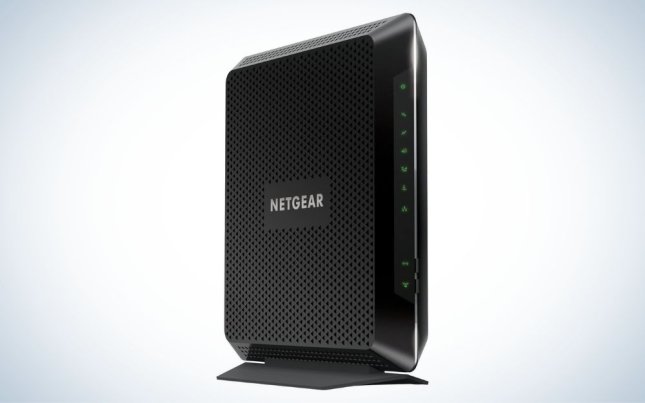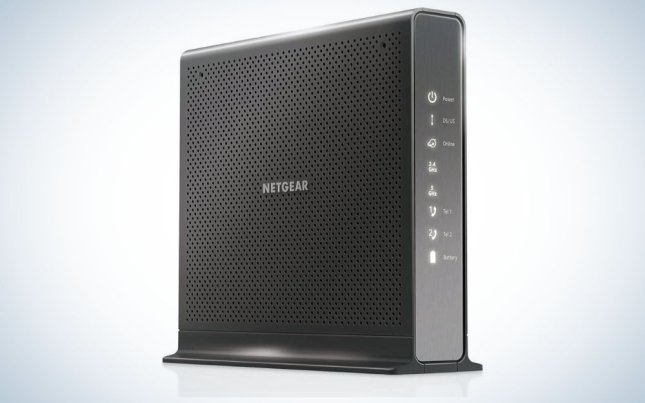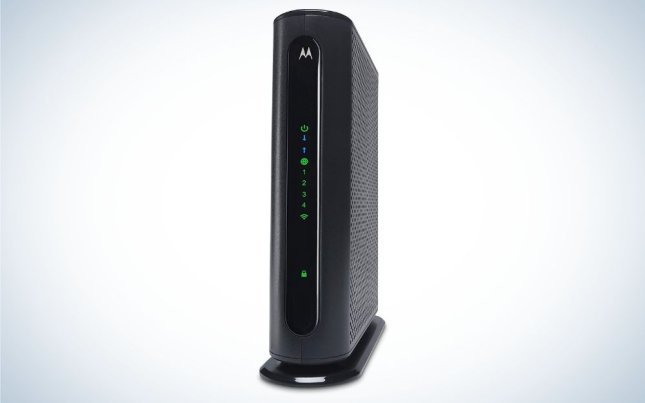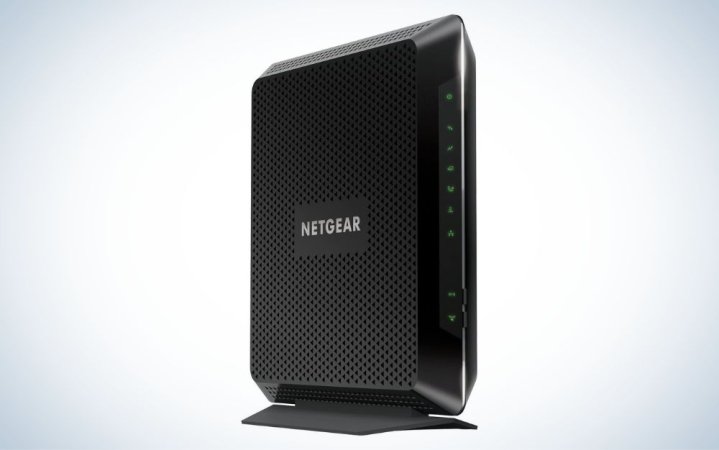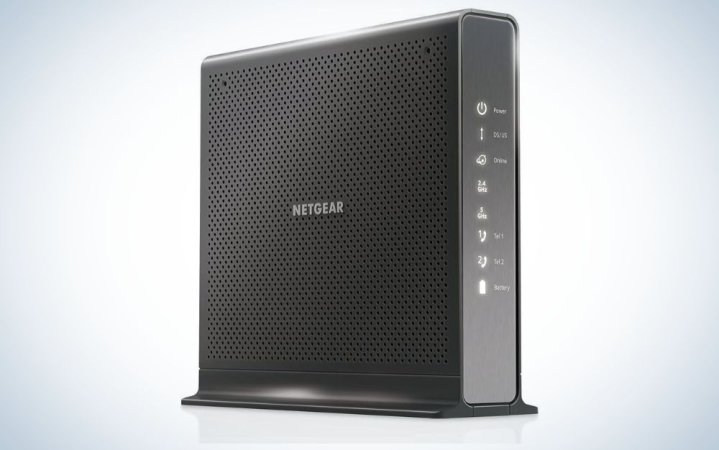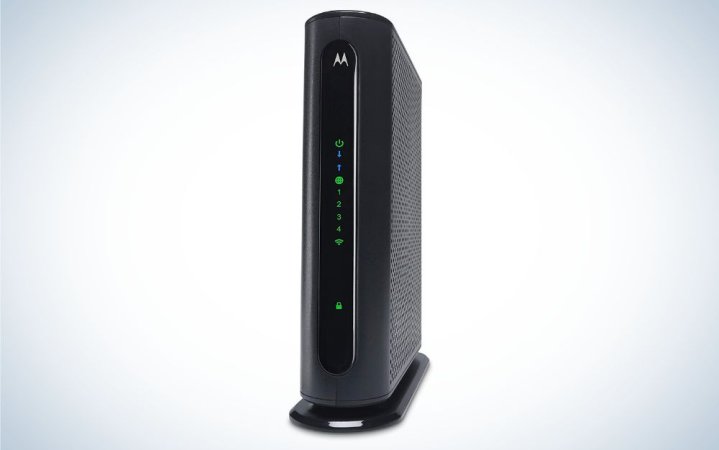We may earn revenue from the products available on this page and participate in affiliate programs. Learn more ›
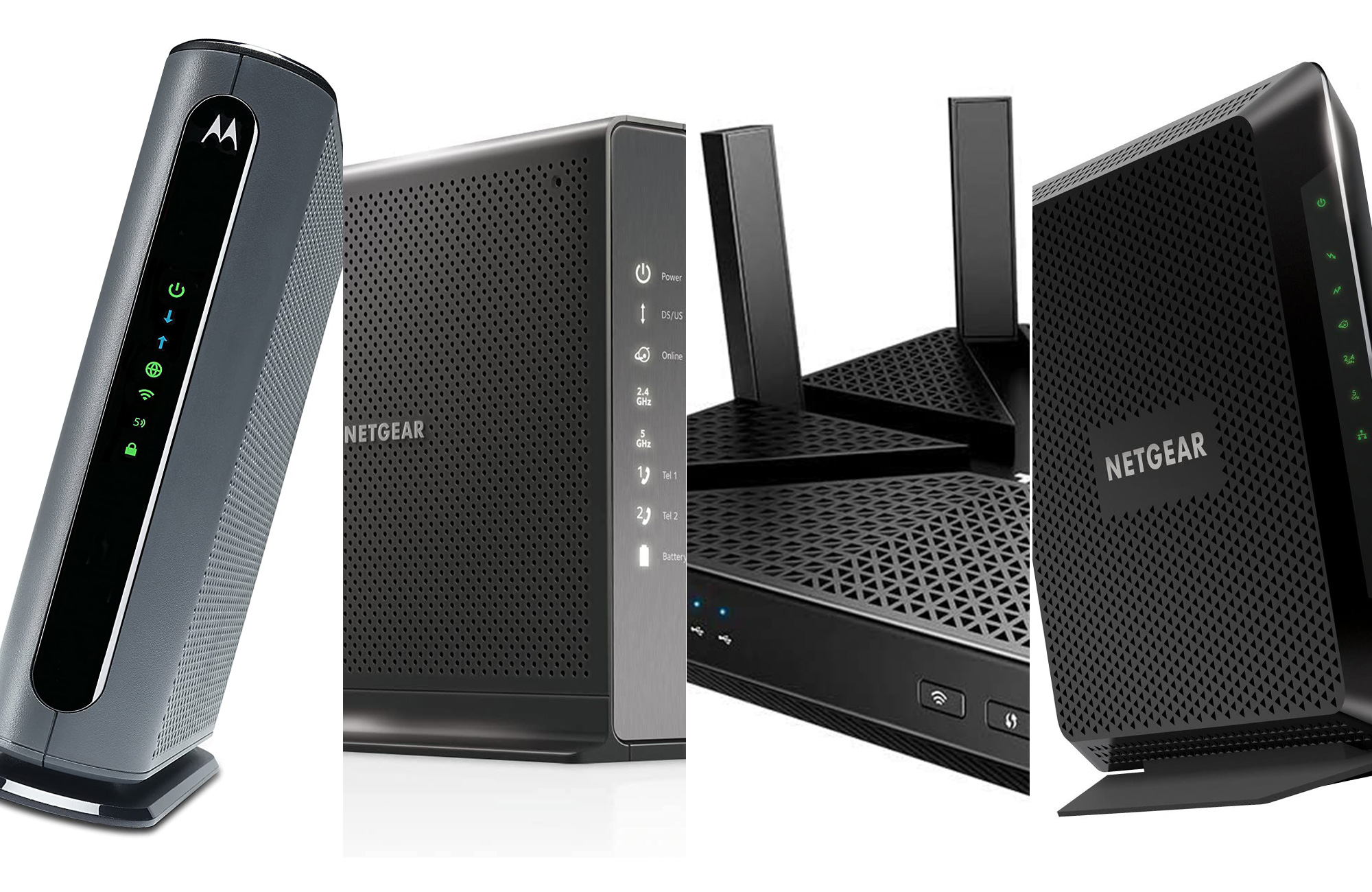
Signing up for Comcast’s Xfinity internet service presents you with two options: either rent a router for Xfinity or purchase your own. At first, it might seem smarter to go with the path of least resistance and get the Xfinity router; it’s going to work and is presented as pretty affordable per month. However, after doing a cost-benefit analysis, buying your own modem and router will be cheaper, especially if you’re going to be an Xfinity customer for many years. Router shopping can be costly and nerve-wracking, especially if you purchase the incorrect router and there’s a strict no-return policy. Leave the frantic searching to us: we’ve come up with this list of the best routers for Xfinity.
- Best overall: NETGEAR Nighthawk Cable Modem-Router Combo C7000
- Best gaming: TP-Link AC4000
- Best premium: NETGEAR Nighthawk C7100V
- Best for streaming: Motorola MG7700 Modem-Router Combo
- Best budget: Motorola MG7315 Modem-Router Combo
How we chose the best routers for Xfinity
First, you need to identify what kind of router you want. Then, you need to verify that the router works with Xfinity. To come up with this list, we researched the wide diversity of manufacturer claims, model specs, peer experiences, and user impressions. We then made our top five picks.
The best routers for Xfinity: Reviews & Recommendations
The best routers for Xfinity solve pain points for consumers while adding to the user experience as a whole. Our recommendations focus on the best options that are relatively future-proofed but can work with older devices and technology.
Best overall: NETGEAR Nighthawk Cable Modem-Router Combo C7000
Best overall
Pros
- Wide range
- Future-proofed DOCSIS 3.1
- Fast download speeds
Cons
- Technical support for software is subscription-based
- No support for WiFi 6
Why it made the cut: This modem-router combo can handle up to 30 devices.
Specs
- Modem combo: Yes
- Max speed: 800 Mbps
- WiFi Range: 1,800 square feet
This router was named best overall in our Spectrum routers round-up, and there’s a reason why it’s also the best overall for Xfinity. It covers 1,800 square feet, can handle up to 30 devices simultaneously, and is compatible with Xfinity plans up to 800 Mbps. It includes separate networks for 2.4 GHz and 5.0 GHz bands, meaning you can organize your devices based on band level. You can plug in gaming consoles and computers to Ethernet thanks to four one-gigabit Ethernet ports, and can share storage with a connected device using the USB port. The router supports WiFi 4 and WiFi 5 but does not support WiFi 6, however. It features a WPA2-PSK security protocol, which is secure enough to protect your home without an enterprise authentication server—simply provide an 8- to 62-character-long passphrase to encrypt your network. And, it meets DOCSIS 3.1 specifications. It’s worth noting that it will take some time to see a return on your investment with the Nighthawk, but multiple reviews note that owners’ internet speed and performance were improved after setup, making the purchase worth it. There’s a reason Netgear routers are consistently among our favorites.
Best gaming: TP-Link AC4000
Best gaming
Pros
- Can choose what devices go on each band
- High coverage area
- Alexa compatibility
- Make your own VPN server at home
Cons
- Reviewers note tech support could be improved
Why it made the cut: This tri-band router is lightning-fast and has built-in security features.
Specs
- Modem combo: No
- Max speed: 800 Mbps
- WiFi Range: 3,000 square feet
If you’ve got a modem and are searching for a pure router that will take on 4K streaming and PC gaming sans lag, look no further than the TP-Link AC4000, which is compatible with 800 Mbps Xfinity internet plans. Say goodbye to buffering thanks to MU-MIMO technology, which lets you connect more devices at once—perfect for setting up multiple consoles and a PC to WiFi. If you’d like to throw some wired connections into the mix, two 1 Gbps and two 2 Gbps Ethernet ports are there for your use. Tri-band capabilities allow you to customize which band—2.4 GHz and two 5 GHz—your device will communicate with. Keep your online activities secure with VPN capabilities and a free lifetime subscription to TP-Link HomeCare, which features antivirus, parental controls, and Quality of Service (QoS). You can even toggle certain controls with Alexa voice commands. If this gaming router doesn’t tickle your megabytes, check out more of our best gaming routers.
Best premium: NETGEAR Nighthawk C7100V
Best premium
Pros
- Compatible with Xfinity Voice (VoIP)
- Supports up to 30 devices
- Shared storage drive
Cons
- Is an older model
Why it made the cut: This Netgear router provides reliable performance now and for the future.
Specs
- Modem combo: Yes
- Max speed: 800 Mbps
- WiFi Range: 1,800 square feet
This modem-router combo from Netgear is ideal for streaming in 4K, high-speed gaming, and fast downloads. It works with Xfinity internet plans up to 800 Mbps (even more theoretically), has a wide range of 1,800 square feet, and supports up to 30 devices. Unlike other routers on our list, this one features 2 VoIP ports, which allows you to route your calls over the internet—creating clearer voice calls, lowered costs, and higher scalability. The Netgear Nighthawk C7100V features DOCSIS 3.0 capabilities and includes two USB ports and four Ethernet ports. However, it is an older model, so not the best long-term investment.
Best for streaming: Motorola MG7700 Modem-Router Combo
Best for streaming
Pros
- Quick set-up
- Right speed for high-speed customers
- Xfinity-approved
Cons
- Connectvity issues in larger homes despite range
Why it made the cut: This Xfinity-approved modem-router combo has all you need for quality internet quickly.
Specs
- Modem combo: Yes
- Max speed: 800 Mbps
- WiFi Range: 2,000 feet
With its high-speed internet compatibility and four Ethernet ports for direct connection, you’ll have no problems surfing the web or streaming your favorite shows. Setup is quick: you just need to plug in a power cord and coaxial cable and follow a few simple steps to secure your connection. Plus, if you do run into any problems, your customer support tech from Comcast Xfinity will likely be at least somewhat familiar with the MG7700 and can give you some pro tips about working with the device.
The Motorola MG7700 works best in medium-sized homes, with those in large homes finding some trouble connecting in the far corners of their home. For these customers, the WiFi 6/DOCSIS 3.1 Motorola MG8725 might work better. The average person in the here and now, however, will find that the MG7700 will more than suffice.
Best budget: Motorola MG7315 Modem-Router Combo
Best budget
Pros
- Faster return on investment
- Easy installation
- Power Boost huge advantage
Cons
- No 5 GHz band
- Not future-proof
Why it made the cut: This modem-router combo is just under $100 and includes basic features for the fuss-free user.
Specs
- Modem combo: Yes
- Max speed: 200 Mbps
- WiFi Range: 1,200 square feet
Do you live alone and need a router-modem combo that just gets the job done, no bells and whistles included? Check out the Motorola MG7315, which is compatible with Xfinity’s 200 Mbps service plan—perfect for web browsing, streaming, and light online gaming. This DOCSIS 3.0 cable modem and WiFi 4 router has four Ethernet ports for wired connections. Don’t let its single-band fool you: Its “Power Boost” technology reinforces the WiFi signal for quality gaming, streaming, and video conferencing. A vertical design makes for easy, discreet placement, and prevents overheating for longer product life. Although it doesn’t have any USB ports, it does feature four Ethernet ports for connecting devices directly to the internet. If you’re looking for a step-up option, check out the Motorola MG8702, which features dual-band tech, WiFi 5, and app control capabilities in a similar design.
What to consider when buying the best routers for Xfinity
Reviews, meeting at least the minimum requirements, and crowd-sourced reports can tell you a lot about the overall functioning of a router. Then smaller factors can help you pick once you’ve narrowed it down to a few choices.
Should I get a modem-router combo?
A modem connects you to the internet that Xfinity provides. A router lets your devices access the internet from around your house. A router serves little to no purpose without a modem. If you get a router but don’t have a modem, you will be stuck with a box offering you access, but access that’s the equivalent of opening a door and finding a brick wall.
This is why some reach for a modem-router combo: you get everything you need in a single piece of equipment. To avoid disappointment, be sure to check for compatibility, either from the manufacturer or from Xfinity’s website.
Speed
Routers are rated on the max speed they can deliver. Find the perfect internet speed for you, then buy a router that has a max speed above but not too above that speed (why pay for something you’re not using, after all).
The next thing you’ll need to consider is DOCSIS, or “Data Over Cable Services Interface Specification.” This factor affects your speed by determining how well the internet can travel from the modem part of the combo to the router part.
There are two varieties of DOCSIS you’ll have to worry about: DOCSIS 3.0 and DOCSIS 3.1. DOCSIS 3.0 is capable of 200 Mbps upload speeds and up to 1 Gbps download speeds. DOCSIS 3.1 has 2 Gbps upload and 10 Gbps download speeds.
WiFi standard
There are three WiFi standards you are likely to hear about while router shopping. From most to least common, they are WiFi 5, WiFi 6, and WiFi 6E.
WiFi 5: This standard appears on most routers, and supports speeds up to 3.5 Gbps. It was first introduced around 2011.
WiFi 6: We’ve written extensively about WiFi 6, but to sum up: WiFi 6 began in 2019 and can handle multi-gigabit internet speeds. It can also handle a much larger number of network devices at once, including smart light switches and smart speakers. WiFi 6 routers also have next-gen. security protocols, like WPA3, and an extended range.
WiFi 6E: WiFi 6E is newer than WiFi 6, with the E standing for “Enhanced.” Understanding WiFi 6E is important for future-proofing devices. If you want something to last for years, one of our picks for the best WiFi 6 routers should be more than enough.
Range
WiFi range is determined by the kind of router you’re using, the wireless protocol the router follows, and the space you’re in. 2.4 GHz WiFi routers can reach up to 150 feet indoors and 300 feet outdoors and should be used if you’re looking for long-distance WiFi. Routers running on 5 GHz bands can reach around one-third of these distances since it uses narrower wavelengths—because of this, you should choose a 5 GHz router for speed, but only if your devices can be located nearer to your internet access point. Newer routers operate on both 2.4 GHz and 5 GHz bands to reach greater distances and achieve maximum throughput for devices in closer proximity.
Walls, electronic devices, and certain other materials in between your device and the router can weaken the signal (which is why we’ve put together a handy guide to WiFi extenders).
FAQs
It depends on what kind of router you purchase. Router-modem combos can cost between $100-$300. A router by itself can cost as low as $50, depending on which one you purchase. And extra capabilities—like MU-MIMO, QoS, and VPN points—can up the price of a router.
We’ve used this example before and we’re happy to use it again: The modem is the entire pie that Xfinity has baked, connecting you to all the internet that the company provides. Well, at least the slice of Xfinity’s pie you pay for. Your plan determines how large your slice is. The only way you can access that slice of pie is through a modem. Connecting a router to the modem lets you give bites of the pie you’ve bought to your phone, laptop, gaming console, and/or smart devices. A router will not serve many purposes without a modem.
Between advances and technology and overall lifecycles, a router will last about five years. Some even say you should replace it every three to four years. Of course, routers that include newer WiFi protocols will tend to lean on the five-year mark since they’re built to be future-proof. If you notice that your WiFi range, speed, and connection are getting worse, it might be time for an upgrade.
Final thoughts on the best routers for Xfinity
- Best overall: NETGEAR Nighthawk Cable Modem-Router Combo C7000
- Best gaming: TP-Link AC4000
- Best premium: NETGEAR Nighthawk C7100V
- Best for streaming: Motorola MG7700 Modem-Router Combo
- Best budget: Motorola MG7315 Modem-Router Combo
The best routers for Xfinity should accommodate your current internet plan but leave room to level up for faster internet speeds. VPN capabilities, Alexa compatibility, and app customization are a few add-ons that help you integrate other technologies into one device. At the end of the day, the best Xfinity router should make your life easier and worry-free from spotty internet.
